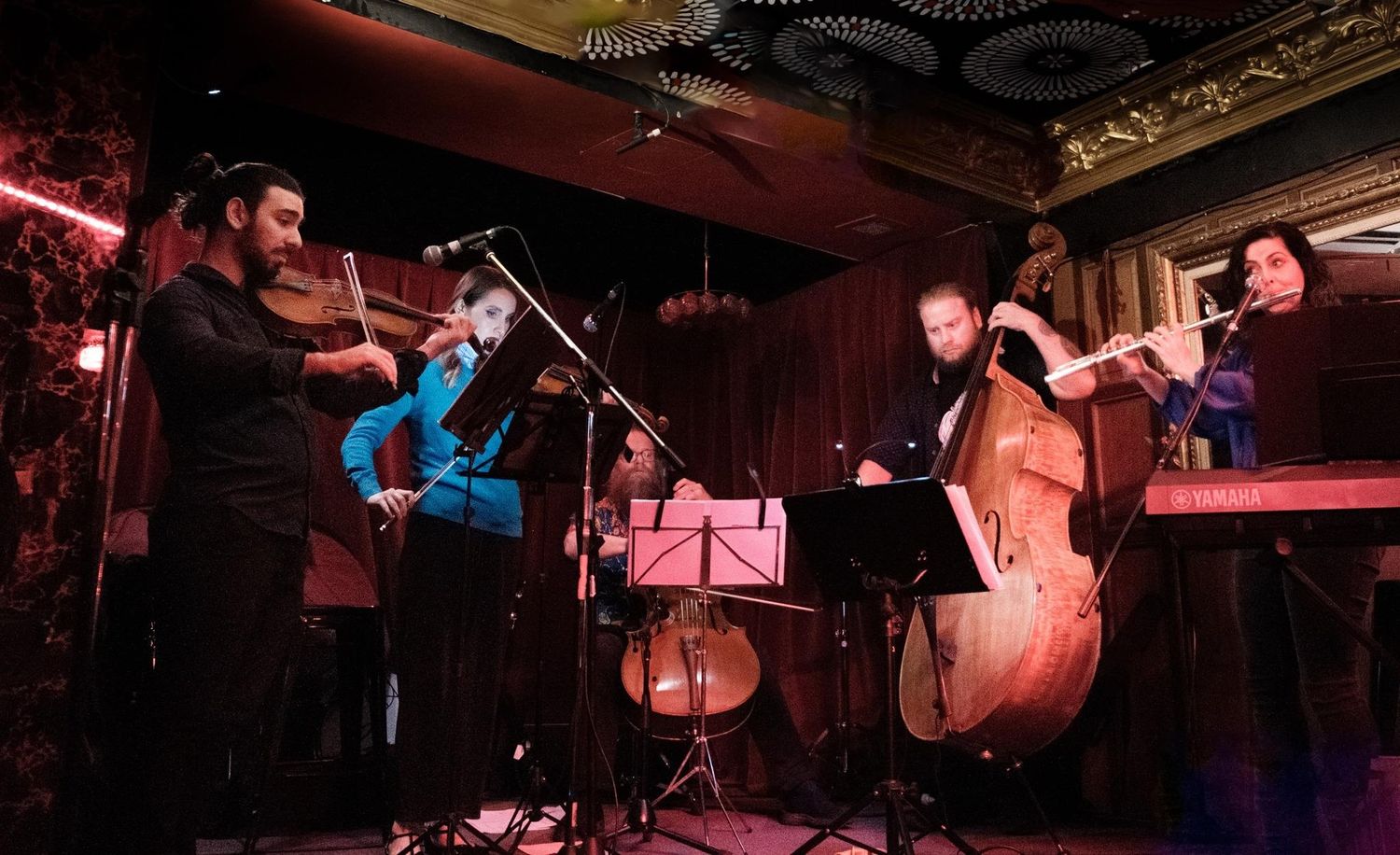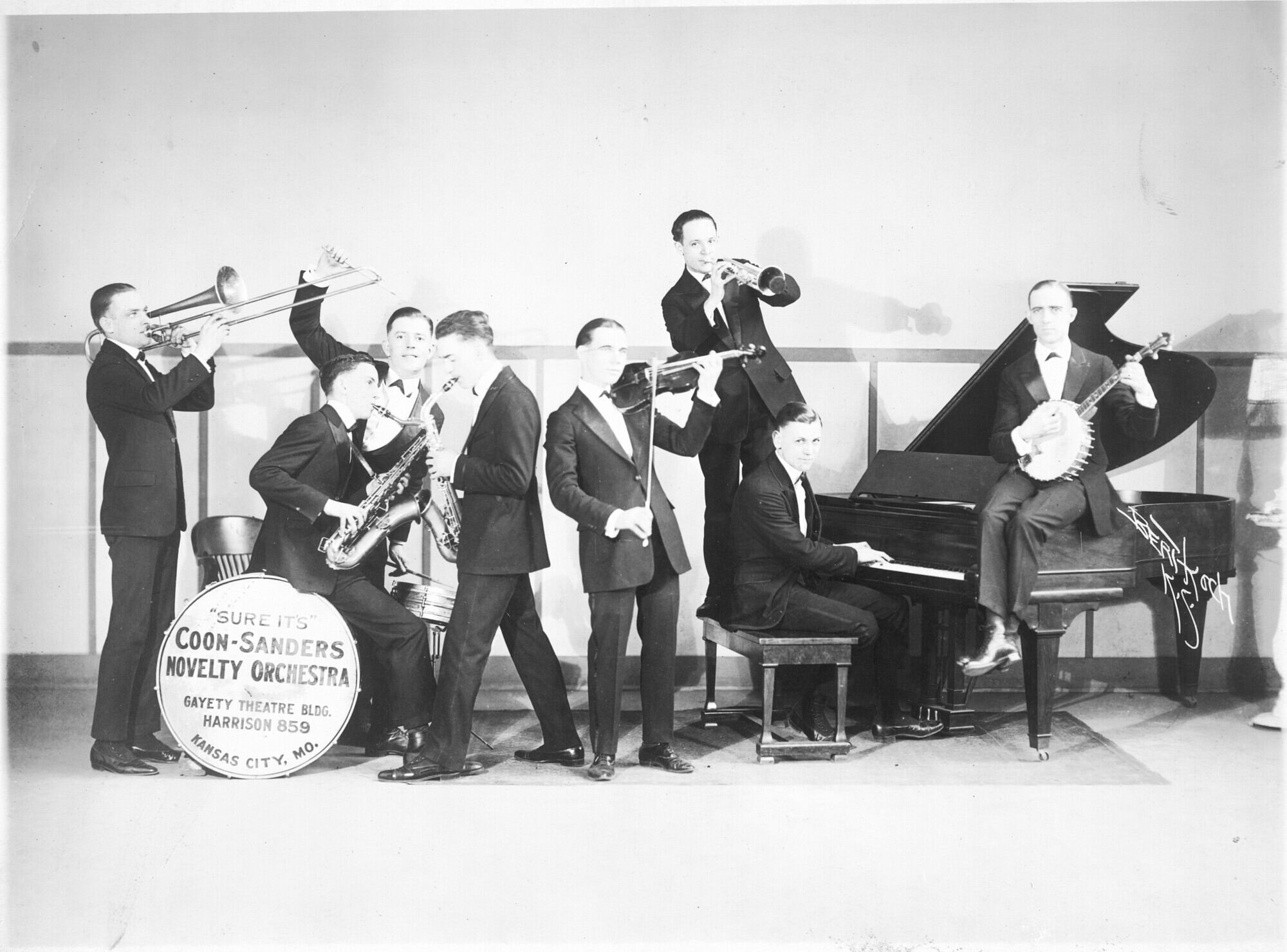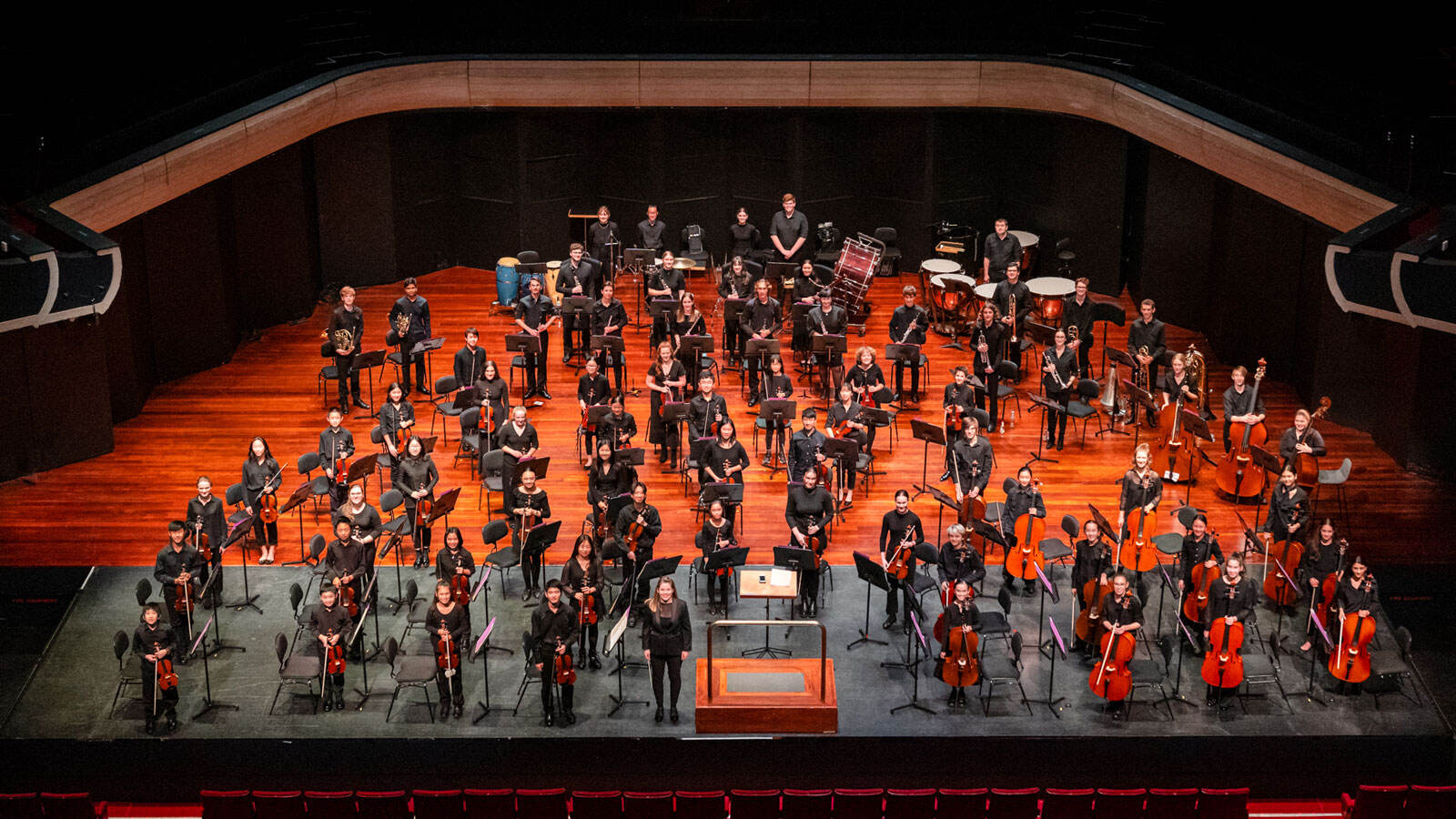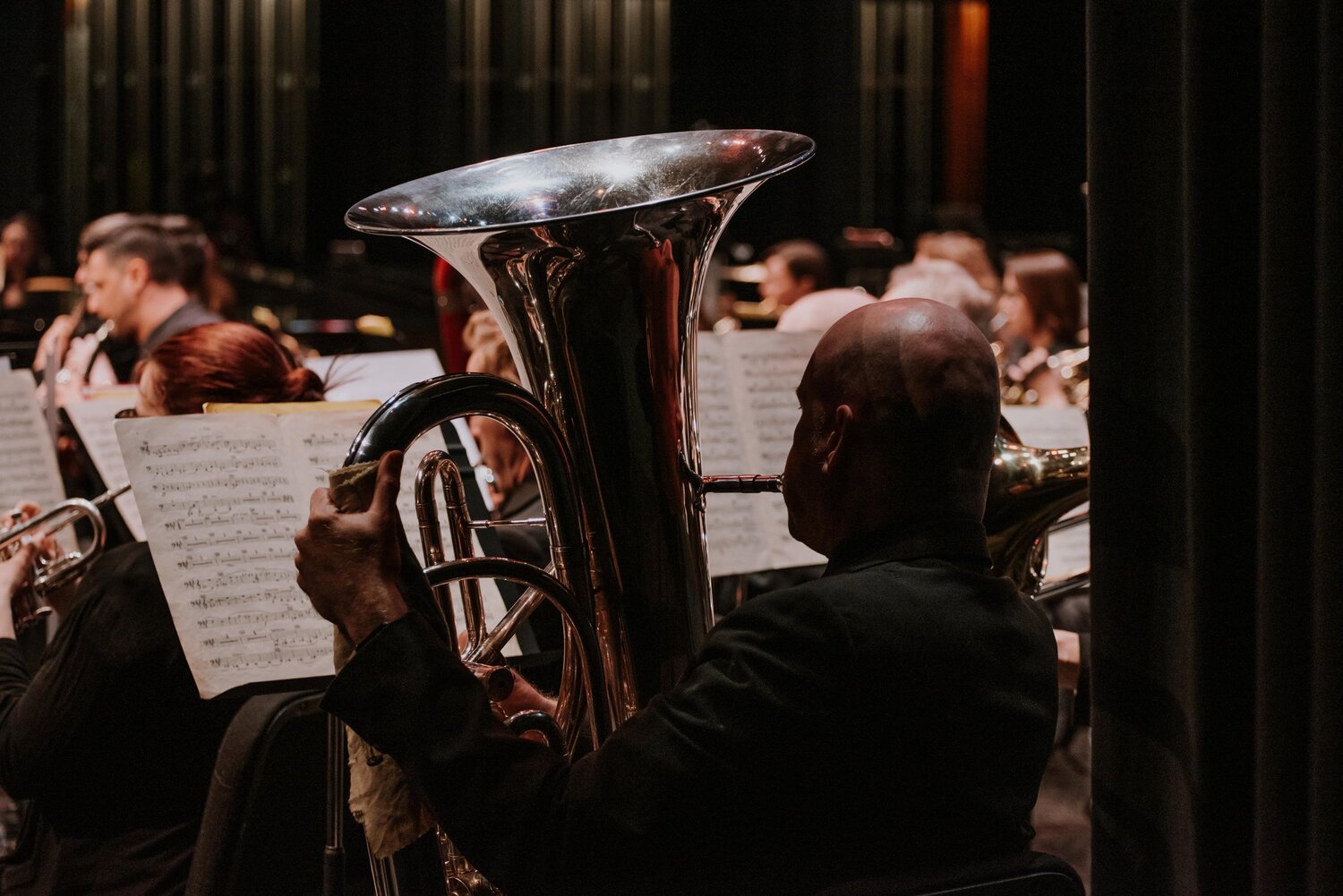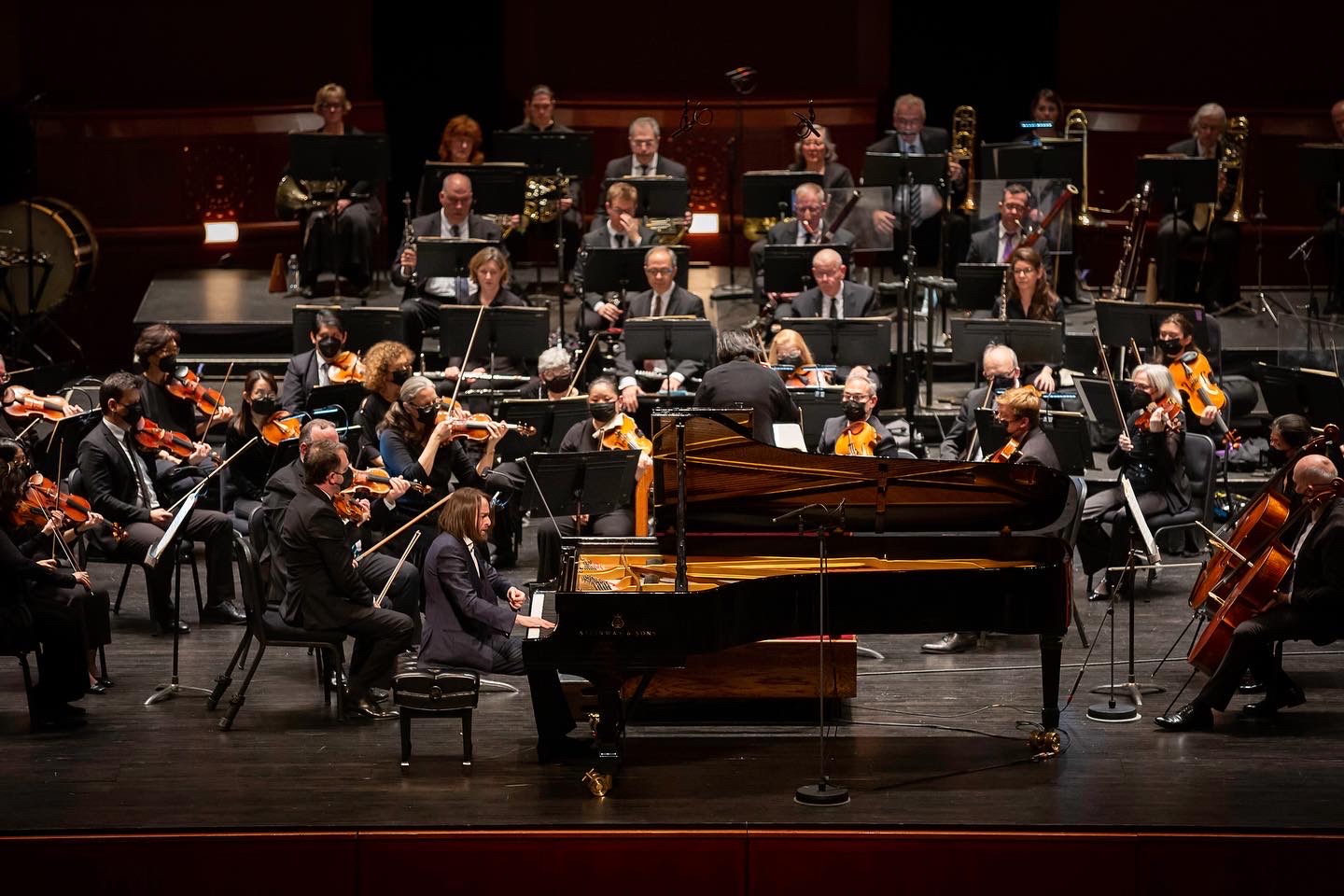Home>Production & Technology>Orchestra>What Is A Chamber Orchestra
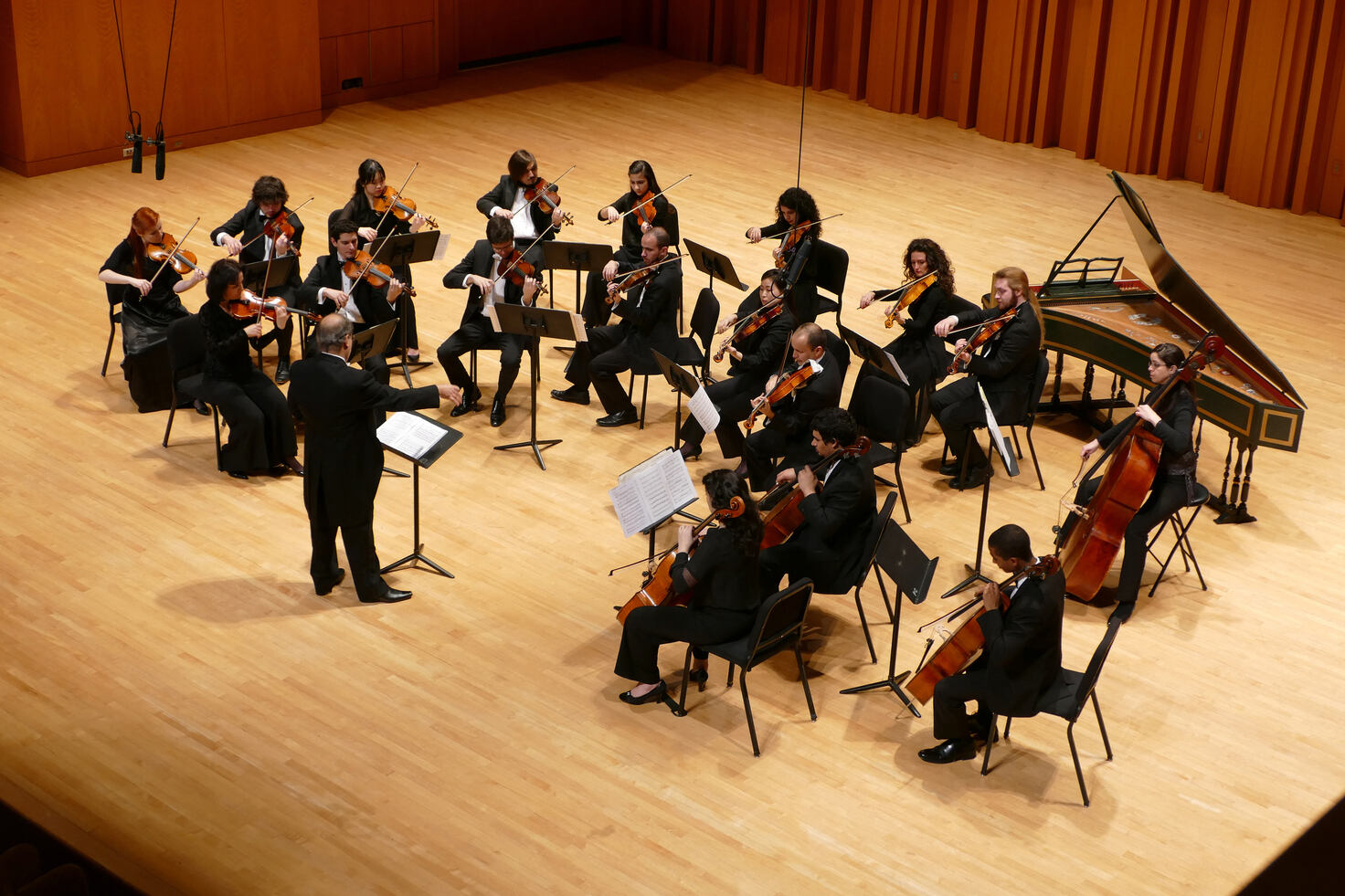

Orchestra
What Is A Chamber Orchestra
Published: February 24, 2024
Discover the beauty of a chamber orchestra - from its unique ensemble to its captivating performances. Learn about the role of an orchestra in music and its significance in the world of classical music. Explore the charm and versatility of orchestral music today.
(Many of the links in this article redirect to a specific reviewed product. Your purchase of these products through affiliate links helps to generate commission for AudioLover.com, at no extra cost. Learn more)
Table of Contents
Introduction
Chamber orchestras, with their intimate and captivating performances, hold a distinct place in the world of classical music. These ensembles, comprising a small group of talented musicians, create a mesmerizing experience for audiences through their precision, unity, and nuanced interpretations of musical compositions. As we delve into the realm of chamber orchestras, we embark on a journey that unravels the rich history, unique characteristics, and captivating repertoire of these musical ensembles.
Chamber orchestras, often consisting of 30 musicians or fewer, offer an enchanting musical experience that differs from larger orchestral formations. Their smaller size allows for a more intimate connection between the musicians and the audience, fostering a sense of closeness and immediacy that is truly enchanting. This dynamic enables the musicians to communicate and interact with each other on a more personal level, resulting in performances that are marked by a profound sense of cohesion and synergy.
The allure of chamber orchestras lies in their ability to showcase the individual virtuosity of each musician while seamlessly blending their talents to create a harmonious whole. This delicate balance between showcasing individual artistry and achieving collective musical unity is a hallmark of chamber orchestras, elevating their performances to a level of artistic finesse that resonates deeply with audiences.
As we embark on an exploration of chamber orchestras, we will uncover the historical evolution of these ensembles, their distinctive characteristics, the repertoire that defines their identity, the pivotal role of the conductor in shaping their performances, and the distinguishing features that set them apart from their larger symphonic counterparts. Additionally, we will delve into the world of renowned chamber orchestras, celebrating their contributions to the musical landscape and the enduring impact of their captivating performances.
Join us as we unravel the enchanting world of chamber orchestras, where musical mastery converges with intimate artistry to create transcendent experiences that resonate with audiences across the globe.
Definition of Chamber Orchestra
A chamber orchestra is a musical ensemble that typically consists of 25 to 40 musicians, showcasing a diverse array of instruments such as violins, violas, cellos, double basses, woodwinds, and brass instruments. The defining characteristic of a chamber orchestra lies in its relatively modest size compared to larger symphonic orchestras, fostering an intimate and nuanced musical experience for both performers and audiences. This smaller scale allows for a heightened sense of interaction and communication among the musicians, resulting in performances that exude a remarkable sense of unity and cohesion.
The term "chamber" in chamber orchestra originates from the European tradition, where music was often performed in small, private rooms or chambers. This intimate setting provided an ideal environment for the musicians to engage in collaborative and expressive performances, captivating the listeners with the intricacies of their musical interpretations. Today, chamber orchestras continue to embody this essence of intimacy, offering audiences a unique opportunity to immerse themselves in the subtleties and nuances of classical music.
In contrast to larger symphonic orchestras, chamber orchestras are characterized by their flexibility and agility, allowing for a diverse repertoire that spans various musical styles and periods. This adaptability enables chamber orchestras to explore a wide range of compositions, from Baroque and Classical masterpieces to contemporary works, showcasing their versatility and artistic depth.
Furthermore, the smaller size of chamber orchestras fosters a profound connection between the musicians, as they engage in close musical dialogue and collaboration. This intimate dynamic empowers each musician to contribute their individual artistry to the collective performance, resulting in a captivating blend of diverse voices that coalesce into a harmonious whole.
The essence of a chamber orchestra transcends mere musical performance; it embodies a profound artistic dialogue and synergy that elevates the concert experience to a realm of unparalleled intimacy and emotional resonance. As audiences immerse themselves in the captivating performances of chamber orchestras, they embark on a transformative musical journey that transcends the boundaries of time and space, forging a profound connection between the performers and the listeners.
History of Chamber Orchestra
The history of chamber orchestras traces back to the rich tapestry of European musical traditions, where the evolution of these ensembles reflects the dynamic interplay of artistic innovation and cultural influences. The origins of chamber music can be found in the intimate gatherings of aristocratic patrons and musicians during the Baroque and Classical eras, where small ensembles would convene in private chambers to perform music that was tailored to the intimate setting. This intimate musical dialogue laid the foundation for the emergence of chamber orchestras, which embodied the essence of collaborative artistry and expressive communication.
During the Baroque period, chamber music flourished in the courts and salons of Europe, where composers such as Johann Sebastian Bach and Antonio Vivaldi crafted masterful compositions for small ensembles. The intricate interplay of string instruments, coupled with the vibrant harmonies of woodwinds and brass, gave rise to a rich tapestry of chamber music that captivated audiences with its elegance and emotional depth.
As the Classical era unfolded, the burgeoning interest in chamber music led to the formation of dedicated ensembles that specialized in performing works tailored to smaller venues. The rise of the string quartet, a hallmark of chamber music, exemplified the profound artistic dialogue that defined these intimate performances. Composers such as Wolfgang Amadeus Mozart and Franz Joseph Haydn embraced the expressive potential of chamber music, infusing their compositions with a sense of intimacy and refinement that resonated deeply with listeners.
The 19th and 20th centuries witnessed a renaissance of chamber music, as the genre continued to evolve and flourish in diverse cultural landscapes. The emergence of renowned chamber orchestras, such as the Berlin Philharmonic Chamber Orchestra and the Academy of St Martin in the Fields, propelled the art form to new heights of artistic excellence and global recognition. These ensembles embraced a diverse repertoire that spanned the works of classical masters to contemporary compositions, showcasing the enduring relevance and adaptability of chamber music in the modern era.
Today, the legacy of chamber orchestras endures as a testament to the timeless allure of intimate musical collaborations. From the hallowed halls of historic concert venues to the vibrant tapestry of contemporary performance spaces, chamber orchestras continue to enchant audiences with their captivating interpretations and immersive artistry. As we celebrate the rich history of chamber orchestras, we honor the enduring legacy of these ensembles, whose intimate performances continue to inspire and resonate with audiences around the world.
Characteristics of Chamber Orchestra
The chamber orchestra, with its distinct attributes and captivating allure, embodies a myriad of characteristics that define its essence and distinguish it from larger symphonic ensembles. These defining traits encompass the intimate scale of the ensemble, the dynamic interplay among musicians, the diverse repertoire it encompasses, and the nuanced role of the conductor in shaping its performances.
The intimate scale of a chamber orchestra, typically comprising 25 to 40 musicians, fosters a profound sense of closeness and immediacy that permeates its performances. This modest size allows for a heightened level of interaction and communication among the musicians, creating an environment where individual artistry converges with collective unity. The result is a captivating musical experience that resonates with audiences, drawing them into the intricate web of musical dialogue and expressive nuance.
Furthermore, the dynamic interplay among musicians within a chamber orchestra is characterized by a profound sense of collaboration and synergy. The ensemble's smaller size enables each musician to engage in close musical dialogue, fostering a rich tapestry of interwoven voices that coalesce into a harmonious whole. This intimate dynamic empowers the musicians to showcase their individual virtuosity while seamlessly blending their talents to create performances marked by precision, unity, and artistic finesse.
The repertoire of a chamber orchestra encompasses a diverse range of musical styles and periods, showcasing its versatility and adaptability. From Baroque and Classical masterpieces to contemporary works, chamber orchestras explore a rich tapestry of compositions, infusing each performance with a captivating blend of historical depth and artistic innovation. This diverse repertoire reflects the ensemble's ability to traverse the vast landscape of classical music, captivating audiences with its nuanced interpretations and expressive depth.
The role of the conductor in a chamber orchestra is characterized by a delicate balance of guidance and collaboration. Unlike larger symphonic ensembles, where the conductor exerts a more overt authority, the conductor in a chamber orchestra assumes a nuanced role, shaping the ensemble's performances through subtle gestures and expressive direction. This collaborative dynamic empowers the musicians to engage in a profound artistic dialogue, infusing each performance with a sense of shared creativity and interpretive depth.
In essence, the characteristics of a chamber orchestra converge to create a transcendent musical experience that resonates with audiences on a profound level. From its intimate scale and dynamic interplay among musicians to its diverse repertoire and collaborative ethos, the chamber orchestra embodies a rich tapestry of artistic expression and intimate artistry, captivating listeners with its captivating performances and enduring allure.
Repertoire of Chamber Orchestra
The repertoire of a chamber orchestra encompasses a diverse and captivating array of musical compositions that span various styles, periods, and artistic expressions. This rich tapestry of repertoire reflects the ensemble's versatility and adaptability, showcasing its ability to traverse the vast landscape of classical music with finesse and artistry.
Chamber orchestras often perform a wide range of works from the Baroque, Classical, Romantic, and contemporary eras, embracing the masterpieces of renowned composers while also championing the works of contemporary artists. The ensemble's repertoire may feature iconic compositions by Baroque luminaries such as Johann Sebastian Bach, Antonio Vivaldi, and George Frideric Handel, whose intricate and expressive works resonate deeply with audiences. The evocative melodies and vibrant harmonies of these Baroque compositions infuse chamber orchestra performances with a sense of historical depth and emotional resonance, captivating listeners with their timeless allure.
Furthermore, the Classical era's rich legacy of chamber music, exemplified by the masterful compositions of Wolfgang Amadeus Mozart, Franz Joseph Haydn, and Ludwig van Beethoven, holds a prominent place in the chamber orchestra's repertoire. These works, characterized by their elegance, refinement, and expressive depth, provide a compelling canvas for the ensemble to showcase its interpretive nuance and artistic finesse. The captivating interplay of string, wind, and brass instruments in these Classical compositions imbues chamber orchestra performances with a sense of vitality and emotive power, inviting audiences into a world of transcendent musical beauty.
In addition to the timeless masterpieces of the Baroque and Classical eras, chamber orchestras embrace the lush romanticism of the 19th century, featuring evocative works by composers such as Pyotr Ilyich Tchaikovsky, Johannes Brahms, and Antonín Dvořák. The emotive richness and sweeping melodic landscapes of these Romantic compositions provide a compelling showcase for the ensemble's expressive depth and interpretive prowess, captivating audiences with their poignant lyricism and dramatic intensity.
Moreover, chamber orchestras demonstrate a commitment to nurturing contemporary voices in classical music, often featuring works by living composers that push the boundaries of artistic innovation and creative expression. These contemporary compositions, marked by their inventive textures, harmonic explorations, and thematic depth, reflect the ensemble's dedication to embracing the evolving landscape of classical music while championing the diversity of artistic voices that shape the modern musical narrative.
In essence, the repertoire of a chamber orchestra embodies a captivating journey through the rich tapestry of classical music, spanning centuries of artistic innovation and expressive depth. From the timeless masterpieces of the Baroque and Classical eras to the evocative landscapes of the Romantic period and the vibrant creativity of contemporary compositions, the ensemble's repertoire reflects a commitment to artistic excellence, interpretive nuance, and the enduring power of music to inspire, uplift, and transform the human spirit.
Role of Conductor in Chamber Orchestra
The role of the conductor in a chamber orchestra is characterized by a delicate balance of guidance, collaboration, and interpretive nuance. Unlike larger symphonic ensembles, where the conductor exerts a more overt authority, the conductor in a chamber orchestra assumes a nuanced role that shapes the ensemble's performances through subtle gestures and expressive direction.
The conductor serves as a unifying force, guiding the musicians through the intricate tapestry of musical compositions with a keen understanding of phrasing, dynamics, and expressive nuances. Through subtle yet commanding gestures, the conductor communicates the essence of the music, shaping each phrase and passage to evoke a profound emotional resonance. This collaborative dynamic empowers the musicians to engage in a profound artistic dialogue, infusing each performance with a sense of shared creativity and interpretive depth.
Furthermore, the conductor's role extends beyond mere technical direction; it encompasses a deep understanding of the ensemble's artistic vision and interpretive approach. The conductor cultivates a sense of unity and cohesion within the ensemble, fostering an environment where individual artistry converges with collective musical expression. This collaborative ethos empowers the musicians to imbue each performance with their unique artistic voices while aligning their interpretations to realize the conductor's vision.
The conductor's interpretive guidance is marked by a keen sensitivity to the ensemble's dynamics and musical dialogue, allowing for a fluid exchange of musical ideas and expressive nuances. This nuanced approach enables the conductor to shape the ensemble's performances with a profound understanding of the music's emotional depth and thematic resonance, fostering a captivating blend of individual artistry and collective unity.
In essence, the role of the conductor in a chamber orchestra transcends mere technical direction; it embodies a profound artistic dialogue and interpretive synergy that elevates each performance to a realm of unparalleled intimacy and emotional resonance. As the conductor collaborates with the musicians to shape the ensemble's interpretations, a transformative musical journey unfolds, forging a profound connection between the performers and the listeners.
Chamber Orchestra vs. Symphony Orchestra
Chamber orchestras and symphony orchestras stand as two distinct pillars within the realm of classical music, each embodying unique characteristics, ensemble dynamics, and artistic expressions. Understanding the nuances that set these ensembles apart is essential for appreciating the diverse tapestry of orchestral performances and the captivating experiences they offer to audiences.
Ensemble Size and Scale
One of the primary distinctions between chamber orchestras and symphony orchestras lies in their ensemble size and scale. Chamber orchestras typically comprise 25 to 40 musicians, fostering an intimate and nuanced musical experience that resonates with audiences through its precision and cohesion. In contrast, symphony orchestras are characterized by their larger scale, often featuring 80 to 100 musicians or more, creating a grand and expansive sonic landscape that envelops listeners in a symphonic tapestry of sound.
Performance Venues and Intimacy
The performance venues for chamber orchestras and symphony orchestras also reflect their distinct identities. Chamber orchestras are well-suited for intimate concert settings, where their smaller size allows for a heightened sense of closeness and immediacy between the musicians and the audience. This intimate dynamic enables audiences to immerse themselves in the subtleties and nuances of the music, forging a profound connection with the performers. On the other hand, symphony orchestras thrive in grand concert halls and expansive venues, where their larger ensemble size fills the space with a majestic and powerful sonic presence, captivating audiences with the grandeur and depth of their performances.
Repertoire and Artistic Depth
The repertoire of chamber orchestras and symphony orchestras reflects their respective ensemble dynamics and artistic depth. Chamber orchestras showcase a diverse range of compositions that span various musical styles and periods, from Baroque and Classical masterpieces to contemporary works, highlighting their versatility and adaptability. This diverse repertoire allows chamber orchestras to explore a rich tapestry of musical expressions, infusing each performance with nuanced interpretations and expressive depth. In contrast, symphony orchestras embrace a vast and expansive repertoire that encompasses monumental symphonic works, large-scale compositions, and symphonic masterpieces that demand the grandeur and power of a larger ensemble. The symphony orchestra's repertoire often features iconic symphonies, concertos, and orchestral works that showcase the ensemble's ability to navigate complex orchestrations and monumental musical landscapes.
Artistic Dialogue and Unity
The dynamic interplay among musicians within chamber orchestras and symphony orchestras underscores their distinct approaches to artistic dialogue and unity. In chamber orchestras, the intimate scale fosters a profound sense of collaboration and synergy, enabling each musician to engage in close musical dialogue and contribute their individual artistry to the collective performance. This intimate dynamic empowers the musicians to showcase their nuanced interpretations and blend their talents into a harmonious whole, creating performances marked by precision, unity, and artistic finesse. Conversely, symphony orchestras harness the collective power of a larger ensemble, where a diverse array of instrumental voices converges to create a symphonic tapestry of sound. The ensemble's unity and cohesion manifest in the grandeur and depth of its performances, as musicians collaborate to realize the expansive vision of monumental symphonic works and orchestral masterpieces.
Conductor's Role and Interpretive Depth
The role of the conductor in chamber orchestras and symphony orchestras reflects the nuanced dynamics of guiding and shaping ensemble performances. In chamber orchestras, the conductor assumes a delicate and collaborative role, shaping the ensemble's interpretations through subtle gestures and expressive direction. This nuanced approach empowers the musicians to engage in a profound artistic dialogue, infusing each performance with a sense of shared creativity and interpretive depth. Conversely, in symphony orchestras, the conductor's role encompasses guiding a larger ensemble through complex orchestrations, expansive symphonic works, and monumental compositions. The conductor's interpretive guidance navigates the ensemble through vast musical landscapes, shaping performances with a keen understanding of phrasing, dynamics, and thematic depth.
In essence, the distinctions between chamber orchestras and symphony orchestras underscore the diverse artistic expressions and ensemble dynamics that enrich the world of classical music. Each ensemble, with its unique characteristics and captivating allure, offers audiences a transcendent musical experience that resonates on a profound level, forging a deep connection between performers and listeners. As chamber orchestras and symphony orchestras continue to enchant audiences with their captivating performances, they exemplify the enduring power of orchestral music to inspire, uplift, and transform the human spirit.
Famous Chamber Orchestras
The world of classical music is adorned with an illustrious array of chamber orchestras, each distinguished by its captivating performances, artistic excellence, and enduring legacy. These renowned ensembles have left an indelible mark on the musical landscape, captivating audiences with their intimate artistry and transcendent interpretations. Among the most celebrated chamber orchestras, several have garnered global acclaim for their exceptional musicianship, diverse repertoire, and unwavering commitment to artistic excellence.
One such iconic ensemble is the Academy of St Martin in the Fields, renowned for its exquisite performances and profound artistic depth. Founded by Sir Neville Marriner in 1958, this chamber orchestra has captivated audiences worldwide with its vibrant interpretations of Baroque, Classical, and contemporary works. The ensemble's versatility and dynamic artistry have solidified its status as a beacon of chamber music excellence, inspiring generations of music lovers with its captivating performances.
The Chamber Orchestra of Europe stands as a testament to the enduring spirit of artistic innovation and collaborative excellence. Founded in 1981 by a group of visionary musicians, this ensemble has garnered widespread acclaim for its profound interpretive nuance and emotive depth. The Chamber Orchestra of Europe's diverse repertoire and captivating performances have solidified its position as a trailblazer in the realm of chamber music, enchanting audiences with its compelling artistic vision.
The Berlin Philharmonic Chamber Orchestra, an offshoot of the renowned Berlin Philharmonic, embodies a legacy of artistic brilliance and unparalleled musical finesse. This esteemed ensemble, comprising members of the Berlin Philharmonic, has enraptured audiences with its captivating renditions of Baroque, Classical, and contemporary works. The ensemble's dynamic synergy and emotive expressiveness have established it as a paragon of chamber music excellence, leaving an indelible imprint on the global stage.
Furthermore, the English Chamber Orchestra, with its rich heritage and captivating performances, has set the standard for chamber music artistry. Founded in 1948 by Arnold Goldsborough, this esteemed ensemble has showcased a diverse repertoire that spans centuries of musical innovation, from Baroque masterpieces to contemporary compositions. The English Chamber Orchestra's unwavering commitment to artistic excellence and interpretive depth has earned it a place of distinction in the pantheon of chamber orchestras, captivating audiences with its transcendent musical expressions.
In essence, these famous chamber orchestras, among numerous others, embody the enduring legacy of chamber music, captivating audiences with their captivating performances and unwavering commitment to artistic excellence. As these ensembles continue to inspire and uplift listeners with their transcendent interpretations, they exemplify the profound impact of chamber music on the human spirit, forging a timeless connection between performers and audiences.






